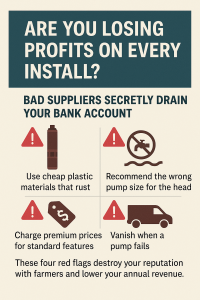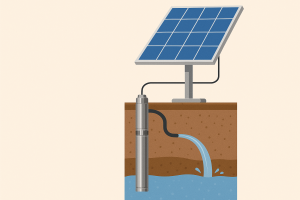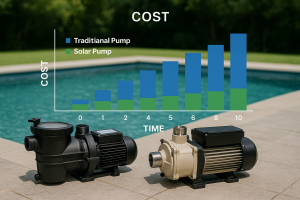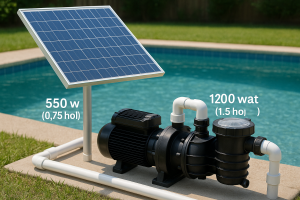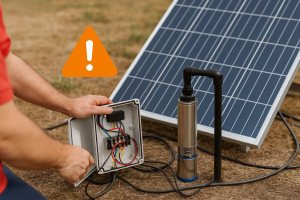Struggling with high energy bills and unreliable water for your farm? Traditional pumps are costly and complex. Solar pumps offer a simple, sustainable, and powerful solution.
Solar water pumps revolutionize agriculture by providing a reliable, off-grid water supply with zero running costs. They use free solar energy to power efficient pumps, ensuring consistent irrigation for crops, even in remote, arid regions. This boosts yields and profitability for farmers worldwide.
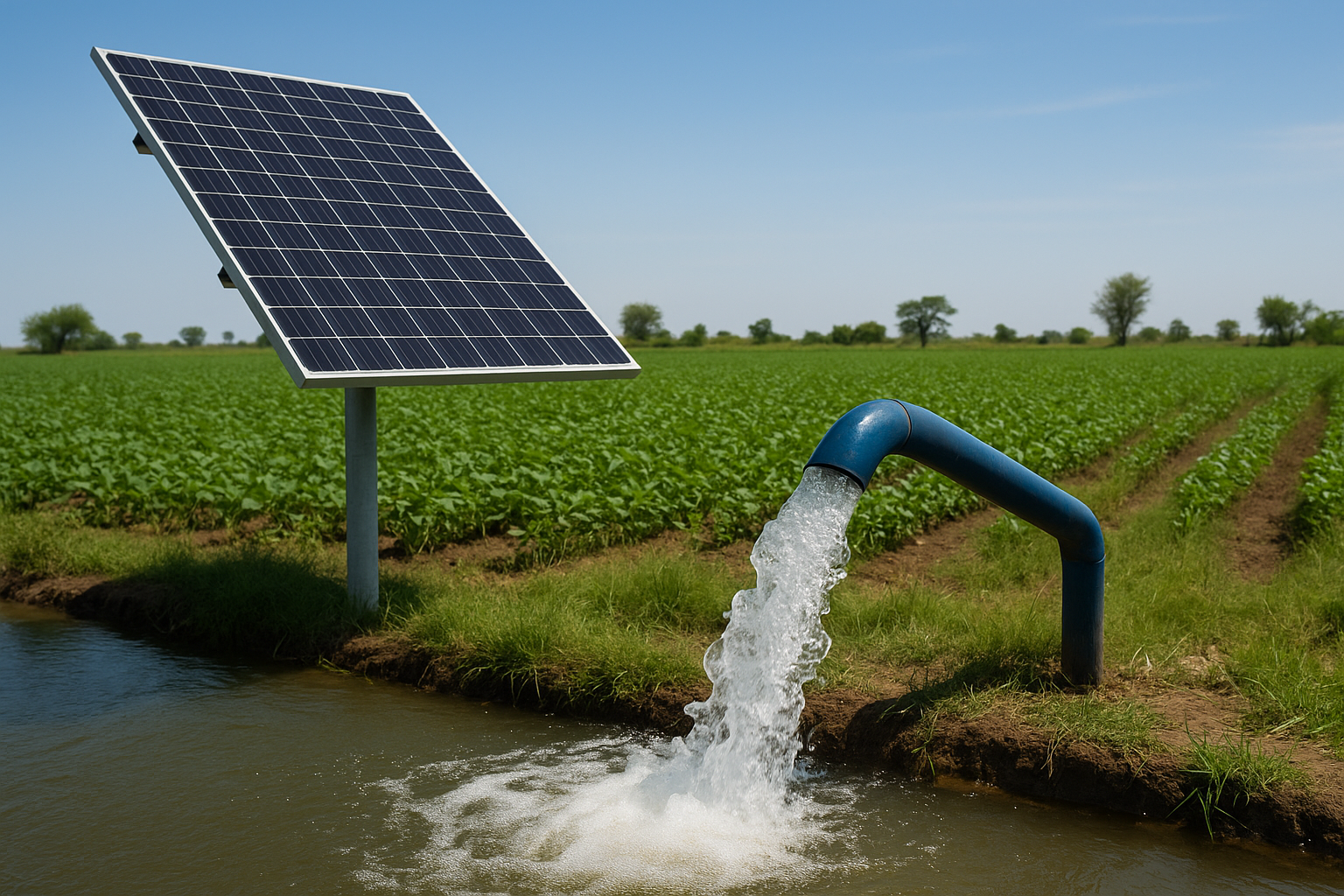 "Solar Pump for Agriculture"
"Solar Pump for Agriculture"
I've seen this transformation firsthand in my factory. We ship our HYBSUN pumps to distributors across the globe, from South Africa to Thailand. These partners, like my client Daniel Nkosi, are helping farmers completely change how they manage their most precious resource: water. But you probably have more specific questions about getting started. Let's break down the common concerns I hear and explore how you can make this technology work for you.
Which water pump is best for agriculture?
Choosing the wrong pump can waste your money and fail to meet your irrigation needs. It's confusing to know which type is right for your land. Let's clarify the best options.
Both solar submersible pumps and solar surface pumps are excellent for agriculture. Submersible pumps are best for deep wells and boreholes, while surface pumps are great for moving water from rivers, ponds, or tanks. The right choice depends on your specific water source.
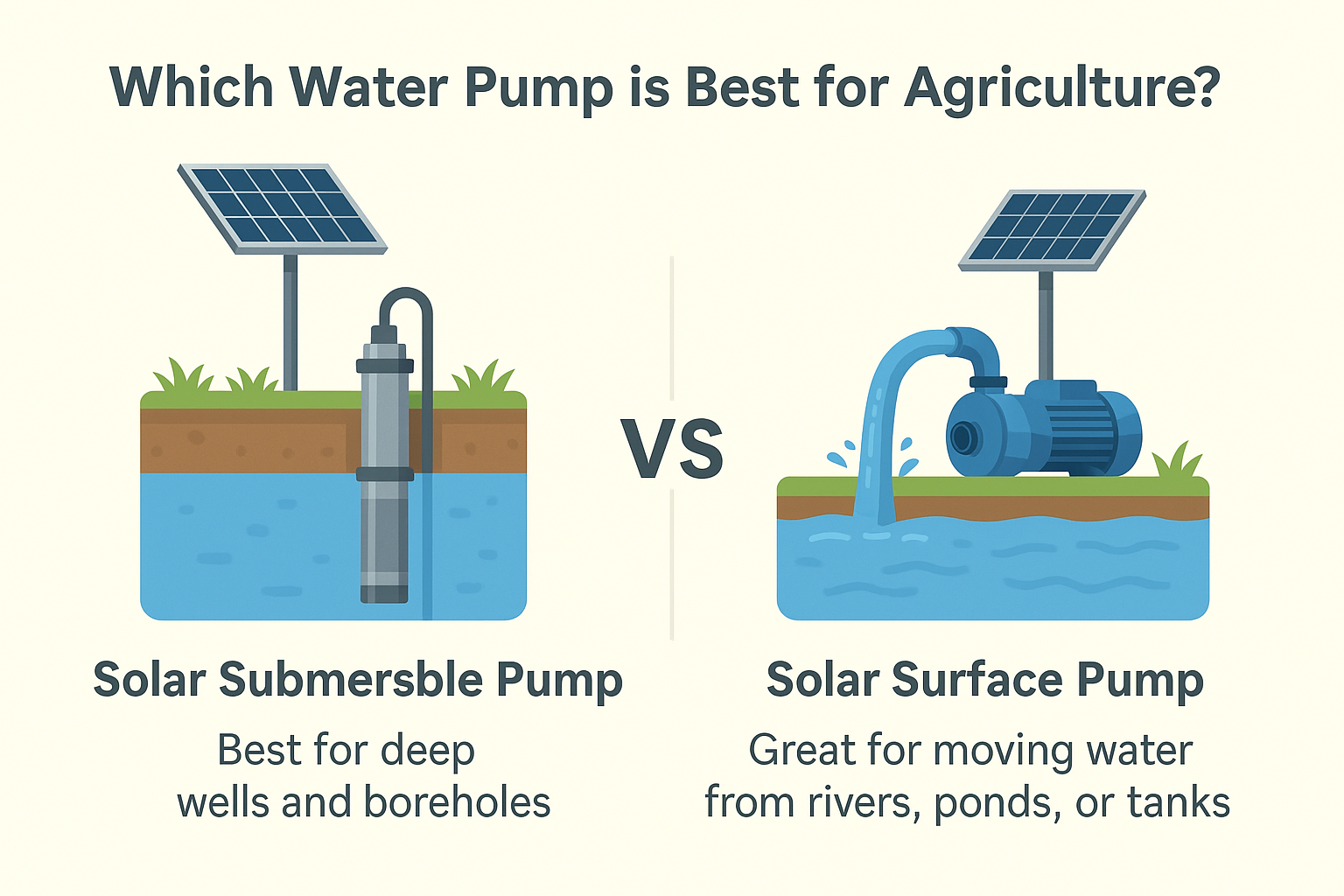 "Types of Agricultural Solar Pumps"
"Types of Agricultural Solar Pumps"
In my experience manufacturing these pumps, the first question I always ask a client is, "Where is your water coming from?" The answer determines everything. For distributors like Daniel in South Africa, who often work with farmers in dry regions, our multi-stage solar submersible pumps are the most popular choice. They are designed to be dropped deep into a borehole and can lift water from great depths efficiently. We build them with corrosion-resistant stainless steel to handle harsh water conditions and ensure a long life.
On the other hand, if you have a river, dam, or large water tank on your property, a solar surface pump is a better fit. It sits on the ground and pulls water from the source. Both types connect to our HYBSUN solar pump inverter. This inverter is the brain of the system; it takes the DC power from the solar panels and runs the pump automatically. It even has functions for water level control, so it stops when your tank is full.
Here is a simple table to help you decide:
| Pump Type | Best For | Common Application | HYBSUN Advantage |
|---|---|---|---|
| Solar Submersible Pump | Deep wells, boreholes (>20 meters) | Irrigating fields, filling livestock troughs | High-efficiency motor, durable stainless steel build |
| Solar Surface Pump | Rivers, ponds, lakes, tanks | Drip irrigation systems, water transfer | Easy to install, minimal maintenance |
How many solar panels do I need to run a 1HP water pump?
Are you worried about the complex calculations for sizing a solar system? Getting the numbers wrong means your pump won't work when you need it most. I can help simplify this for you.
To reliably run a 1HP (which is about 750 watts) water pump, you generally need around 1000 to 1200 watts of solar panels. This provides enough extra power to perform well even on hazy or less sunny days, ensuring consistent water flow.
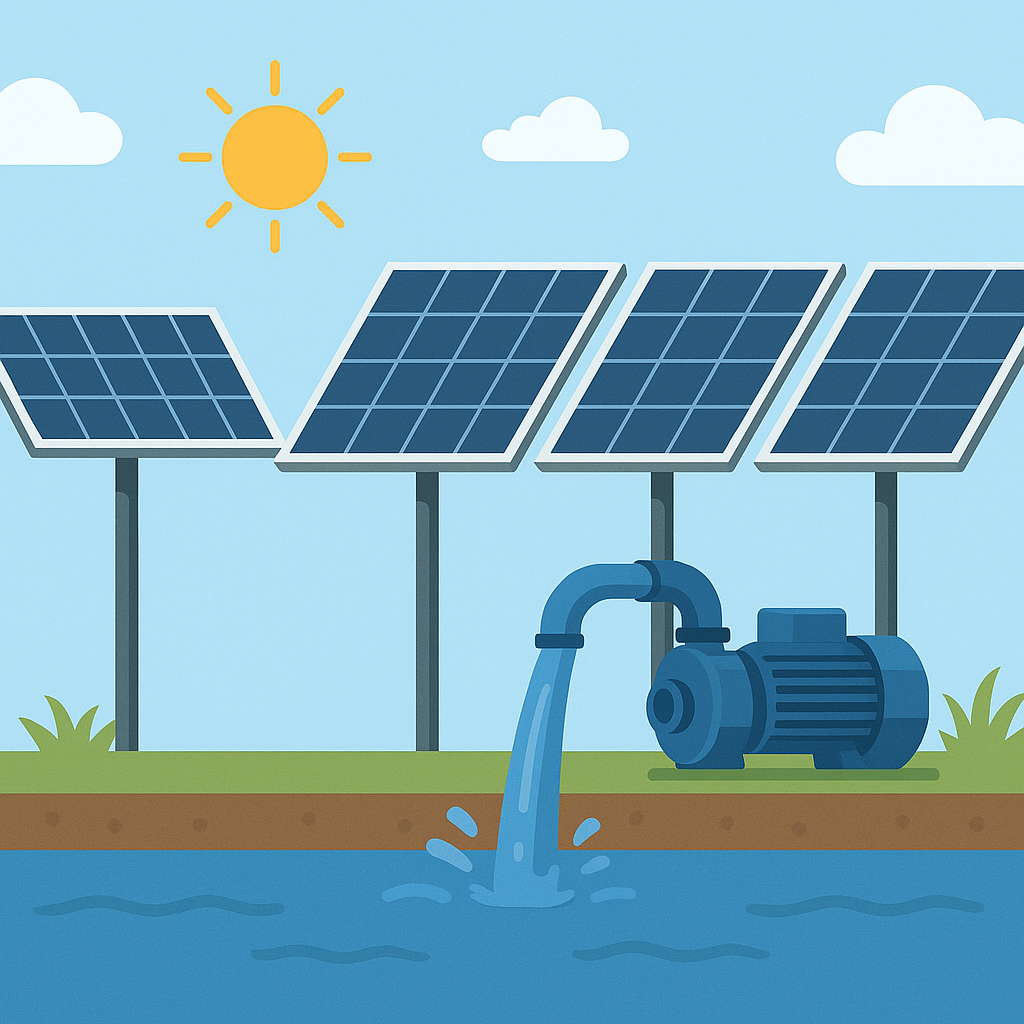 "Solar Panels for 1HP Pump"
"Solar Panels for 1HP Pump"
You might wonder why you need more panel wattage than the pump's rating. This is to account for real-world conditions. Solar panels rarely operate at their peak theoretical output. There are small losses in the wiring, and more importantly, the sun isn't always shining perfectly. That extra wattage acts as a safety buffer.
This is where a high-quality solar pump inverter becomes critical. Our HYBSUN inverters use Maximum Power Point Tracking (MPPT) technology. This smart feature constantly adjusts to get the absolute most power out of your solar panels, with up to 99% efficiency. This means you get more water for your investment and the pump can start earlier in the morning and run later in the afternoon. For a 1HP pump, this could mean using three 400-watt panels, for example. We provide clear guidance to our B2B partners so they can confidently advise their customers.
Here’s a quick guide for common pump sizes:
| Pump Size | Pump Wattage (Approx.) | Recommended Solar Panel Wattage |
|---|---|---|
| 0.5 HP | 375 W | 500 - 600 W |
| 1 HP | 750 W | 1000 - 1200 W |
| 2 HP | 1500 W | 1800 - 2200 W |
| 3 HP | 2200 W | 2600 - 3000 W |
What are the disadvantages of solar water pumps?
Are you thinking that solar water pumps are a perfect solution? Like any technology, they have some drawbacks you must consider before you invest. Ignoring these can lead to disappointment.
The main disadvantages are the high initial investment cost and their total dependence on sunlight. They do not work at night or on very cloudy days without a backup system. However, the long-term savings on fuel and electricity often outweigh these initial challenges.
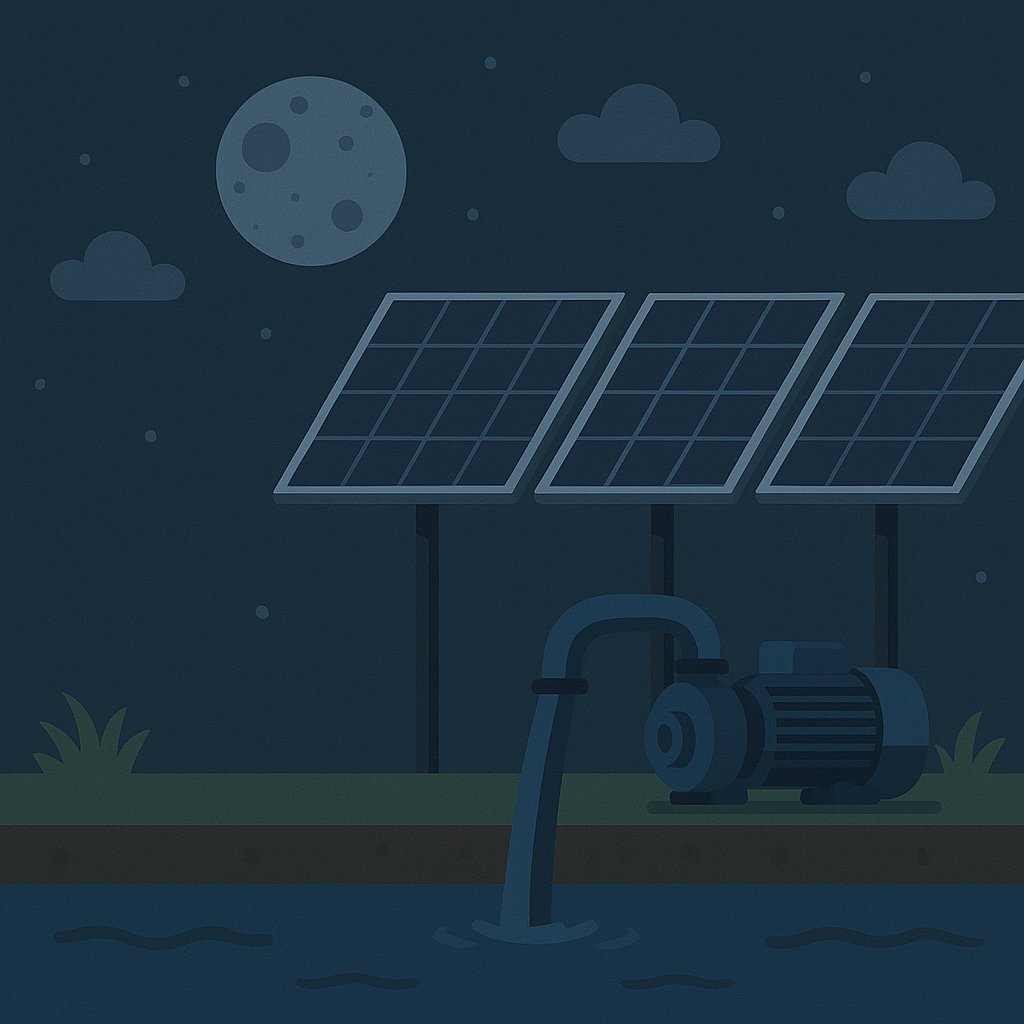 "Disadvantages of Solar Pumps"
"Disadvantages of Solar Pumps"
Let's be honest: the upfront cost is the biggest barrier for most people. A complete solar pump system is more expensive than a conventional electric or diesel pump. I always tell my clients to think of it as an investment, not an expense. After the initial purchase, the energy is free. There are no diesel bills and no electricity costs. Over a few years, the system pays for itself.
The second issue is dependence on the sun. What happens on a rainy week when your crops still need water? This is a serious concern for farmers. That’s why we developed our Hybrid AC/DC Solar Well Pumps. These are a game-changer. They run on solar power whenever it's available, but they can automatically switch to an AC power source—like the grid or a small generator—when the sun isn't shining. This gives you the best of both worlds: low running costs and total reliability.
Here’s how we at HYBSUN address these disadvantages for our partners:
| Disadvantage | Our Solution |
|---|---|
| High Initial Cost | Factory-direct B2B pricing, bulk discounts, and flexible payment terms (e.g., 30% prepayment) to make it more affordable for distributors. |
| Weather Dependent | We offer Hybrid AC/DC models that can switch to a backup power source automatically, ensuring water is always available. |
| Performance Issues | Our high-efficiency motors and advanced MPPT inverters maximize water output, even in low-light conditions. Long warranties (3-5 years) guarantee reliability. |
What size solar water pump do I need?
Are you unsure what size pump you need? A pump that's too small won't deliver enough water, but a pump that is too big will waste your money. Let's find your perfect fit.
To size a solar water pump correctly, you must know two main things: the total vertical distance you need to lift the water (Total Dynamic Head) and the amount of water you need per day (Flow Rate). These two factors determine the right pump model.
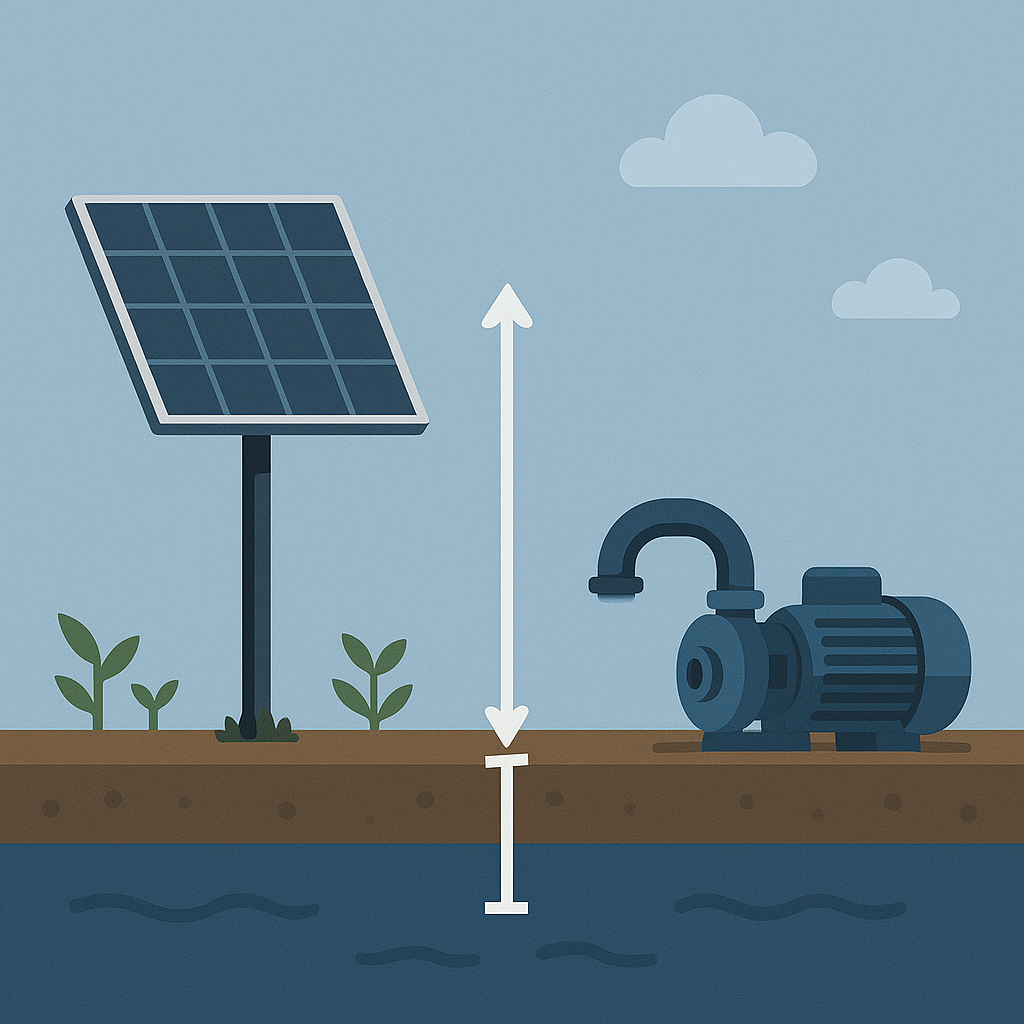 "Sizing a Solar Water Pump"
"Sizing a Solar Water Pump"
This sounds technical, but it’s straightforward. First, "Total Dynamic Head" (TDH) is simply the total height the water has to travel. This includes the depth of your well plus any elevation change to your storage tank or fields. We also have to account for a little bit of pressure loss from the water rubbing against the inside of the pipes.
Second, "Flow Rate" is how much water you need, usually measured in cubic meters per hour or gallons per minute. You need to calculate the total water your crops or livestock require each day. For example, a client in Uganda needed to provide water for 200 cattle and irrigate a 1-hectare vegetable farm. We helped him calculate his daily water requirement and measure his borehole depth. Based on that, we recommended our 2HP solar submersible pump kit, which was the perfect match. Helping our distributor partners make these calculations is a key part of my job.
Use this checklist to gather the information you need:
| Sizing Question | Your Answer | Why It's Important |
|---|---|---|
| What is your water source? | (e.g., Well, Borehole, River) | Determines if you need a submersible or surface pump. |
| How deep is the water level? | (e.g., 50 meters) | This is the main part of your Total Dynamic Head. |
| How much water do you need daily? | (e.g., 20,000 liters) | This defines your required Flow Rate. |
| How high is your tank/field? | (e.g., 10 meters above ground) | Adds to the Total Dynamic Head calculation. |
Conclusion
Solar pumps are a powerful tool for modern agriculture. They offer a reliable, cost-effective water solution that increases farm productivity, profitability, and overall sustainability for years to come.
